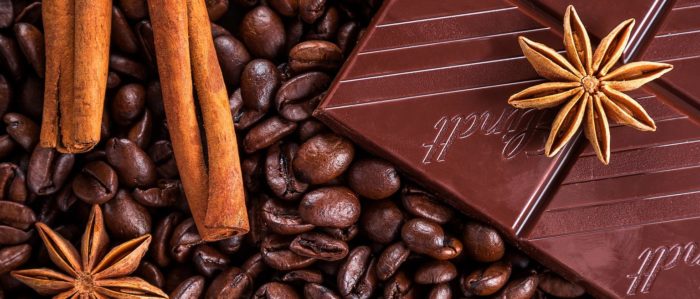
Chocolate’s botanical history is dark and mysterious, rooted in ancient mythological tales. It is said that Quetzalcoatl, the benevolent “Feathered Serpent” god, took human form, descended to earth and presented the ancient people of Mexico with a gift from the garden of Paradise: the cacao tree. He showed them how to plant the tree, harvest the fruit, and prepare his favorite drink, Xocolatl. He instructed Tlaloc, the god of rain, to nourish the tree; Xochiquetzal, the goddess of love, was told to adorn it with flowers and infuse it with her spirit.
Linnaeus, the great 18th-century botanist, memorialized the legend by naming the tree Theobroma cacao, “Food of the Gods,” from the Greek words theo (god) and broma (food). Many botanists believe that the first cacao trees grew wild in the Amazon basin or in the Orinoco Valley of South America. The domestication of the cacao tree, however, did not begin until it reached the lush tropical lowlands of Central America and southern Mexico over 3,000 years ago.
TYPES OF CHOCOLATE
Unsweetened chocolate is chocolate in one of its simplest forms, solid chocolate made with just cocoa solids and cocoa butter. The natural fat content of a cacao bean is 52-55%, which is typically the amount of fat (cocoa butter) found in unsweetened chocolate. The exact ratio of cocoa solids to cocoa butter will vary slightly from producer to producer, with smoother unsweetened or plain chocolates having slightly more cocoa butter in them. This mixture of cocoa solids and cocoa butter, when it is still liquid during the production of chocolate, is known as chocolate liquor. To produce other chocolates, this liquor can be mixed with milk solids, sugar, vanilla, and other ingredients to create a wide range of milk and dark chocolates. By bakingbites.com
Dark chocolate is simply a sweetened form of plain chocolate that contains no milk. It is basically a mixture of chocolate liquor, sugar, cocoa butter, and quite often, vanilla. Plus you might see a substance called lecithin on a label. That is added to serve as an emulsifier. Cocoa that is produced via the grinding of its beans into a liquid form is usually referred to as chocolate liquor, which ironically contains no alcohol whatsoever. Unsweetened baking chocolate is chocolate liquor that has been solidified.
In North America, a standard is set by the Food and Drug Administration (FDA) that bittersweet chocolates are required to contain at least thirty-five percent chocolate liquor. While in the United Kingdom, the figure is usually as high as forty-three percent. It is readily understandable that the more chocolate liquor the chocolate contains, the more intense the flavor you would expect the flavor to be. Some high-quality chocolates contain chocolate liquor as high as 65 to 70 percent, or more.
Milk chocolate is chocolate with milk powder or condensed milk added. The EU regulations specify a minimum of 25% cocoa solids should be present in milk chocolate. However, in the United States, milk chocolate only needs to have a 10% concentration of chocolate liquor to be classified as milk chocolate. Much of the milk chocolate consumed on a daily basis today is made into bars that are made up from cocoa solids milk powder, fats such as cocoa butter (but also vegetable and hydrogenated fats), and sugar or sweetener.
Milk chocolate is primarily eaten as a chocolate bar, in a variety of shapes, sizes, and flavors. However, it can also be used in some desserts, pastries, and confections. Milk chocolate is very heat sensitive because of its high sugar content; therefore it is mostly unsuitable for use in baking (it can change the consistency and texture of the finished product). It’s important not to substitute semi-sweet or bittersweet chocolate with milk chocolate as this can ruin the recipe.
White chocolate is made with a blend of sugar, cocoa butter, milk products, vanilla, and a fatty substance called lecithin. Technically, white chocolate is not a chocolate— and it doesn’t really taste like one—because it doesn’t contain chocolate solids. When cocoa beans are removed from their pods, fermented, dried, roasted, cracked open, and their shells discarded, what results is a nib. Chocolate nibs are ground into a paste called chocolate liquor. Chocolate liquor can be separated into cocoa solids, which provide the flavor, and cocoa butter, which is the fat. Though white chocolate contains extracted cocoa butter, it lacks the component that defines real chocolate.
